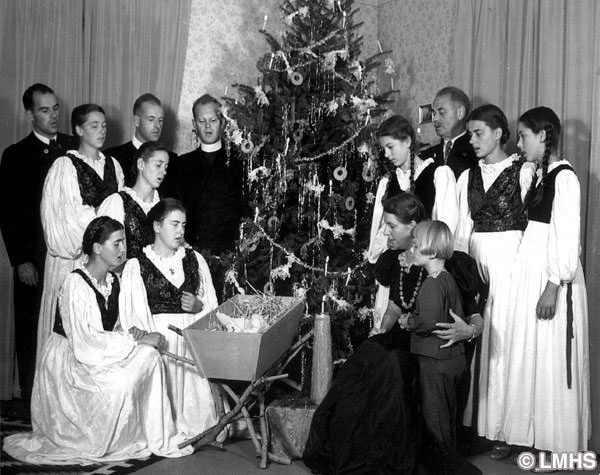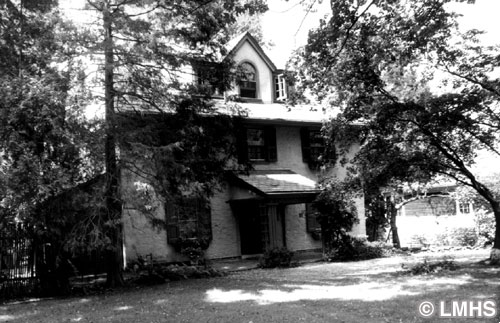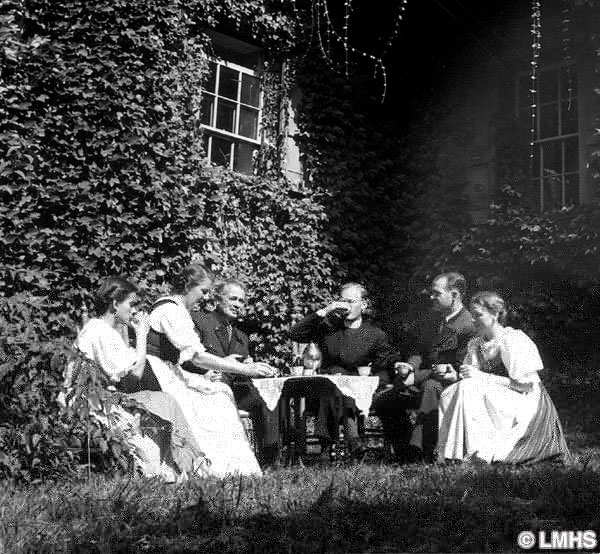The Von Trapp Family in Merion

The Maria von Trapp life story, immortalized by the 1959 Rogers & Hammerstein musical The Sound of Music, had a lively Merion chapter. Baron Georg von Trapp, Baroness Maria, their two sons and seven daughters (ages 7 to 27) arrived in 1938 at 252 Merion Road virtually penniless. As singers seeking refuge in America after fleeing the Nazi takeover of Austria, they settled in that comfortable house lent by Merion lawyer and music patron Henry S. Drinker, Jr., an authority on Bach. There the family’s tenth and last child Johannes (who became the clan’s chiarismatic leader) was born in 1939.
While there, the family also learned to become self sustaining and regained its financial stability, which enabled it to buy the Vermont farm where it moved fulltime in the mid 1940s (and still owns).
The von Trapps already had a jump-start in turning their singing hobby into a successful profession in Europe. Over here, singing soon became a way of life for them. Yet from baking to house-cleaning, like the Swiss family Robinson, they did every chore, made all their own clothes, shoes, furniture, pottery.
At Merion, the distinctive Tyrolean garb of dirndls and lederhosen they all wore daily for reasons of thrift, soon became a Trapp Family Singers signature. One of the concert field’s most heavily booked attractions, they performed as a group for 25 years.
The 1965 film of The Sound of Music won the Academy Award for best picture of the year and was for several years the all-time top money earner, even beating out Gone With the Wind. And an estimated 600,000 people worldwide still see The Sound of Music each year.

